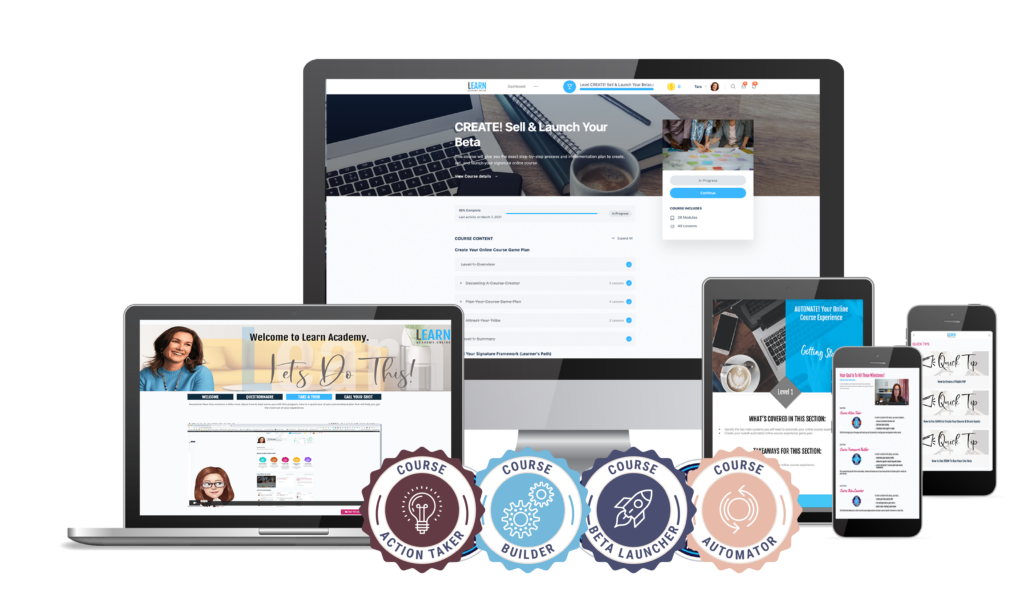Most service-based entrepreneurs are playing a game with an invisible ceiling. No matter how skilled you become, how much you charge, or how efficiently you work, you’re still trapped by the fundamental equation of trading time for money.
This limitation affects 97% of consultants, coaches, and service providers who never break through the six-figure barrier because they’re stuck in the service delivery hamster wheel.
But what if I told you there’s a business model that doesn’t just break that ceiling – it eliminates it entirely?
A model that allows you to scale your service business without trading time for money, creating passive income streams while multiplying your impact across entire industries.
Welcome to the world of Market Makers – the elite 3% who’ve cracked the code on how to scale service business beyond personal capacity limitations.
The Service Provider Trap: Why 97% Stay Stuck
As a service provider, you’re essentially a player in someone else’s game. You compete on price, availability, and reputation. You’re subject to market forces beyond your control. Even if you’re the best in your field, you’re still fighting for a piece of a pie that someone else baked.
The math is brutal and unforgiving:
Your revenue = Your time × Your rate × Your utilization
This equation creates what I call the “Golden Handcuffs Paradox.” The more successful you become, the more trapped you feel. Higher rates mean more pressure. More clients mean less time. Better reputation means higher expectations. You end up working harder for incremental gains while watching your personal life disappear.
The most insidious part? Your success becomes your ceiling. Every hour you spend delivering services is an hour you can’t spend building systems. Every client you take on reduces your capacity for strategic thinking. Every dollar you earn requires your direct involvement, creating a business that owns you rather than one you own.
Consider these sobering statistics about service-based businesses from the Small Business Administration’s latest research:
- 78% of consultants work more than 50 hours per week
- Only 23% ever scale beyond $500K annually
- 89% report feeling “trapped” by client demands
- Less than 5% successfully sell their businesses (because they ARE the business)
These challenges are further validated by Harvard Business Review’s analysis of professional services firms, which shows that traditional billing models create inherent growth limitations.
But here’s what the top 3% understand that others don’t: The goal isn’t to become a better service provider – it’s to stop being one entirely.
The Market Maker Advantage: Controlling Supply and Demand
Market makers don’t compete in markets – they create them. They don’t fight for market share – they own the entire ecosystem. Instead of being one option among many, they become the central hub that all other options revolve around.
Here’s the paradigm-shifting insight that changes everything: When you control both the supply and demand sides of a market, you don’t just win – you make winning inevitable.
Think about this strategically. In traditional business models, you’re competing for customers who have multiple options. You’re trying to convince them you’re better, faster, or cheaper than alternatives. You’re always at risk of being commoditized, undercut, or replaced.
But when you control supply and demand, you’ve fundamentally altered the game:
You control supply by training and certifying the practitioners who deliver solutions in your market. They use your methodology, follow your processes, and represent your brand standards.
You control demand by positioning certified practitioners as the gold standard for quality results. Through content marketing, case studies, and thought leadership, you make certification a prerequisite for credibility.
You own the platform where supply meets demand, generating revenue from every transaction while maintaining quality control and brand standards.
This creates what economists call a “two-sided market” – like eBay connecting buyers and sellers, or Uber connecting riders and drivers. McKinsey’s research on platform economics shows that two-sided markets can scale 10x faster than traditional business models. The difference is you’re not just facilitating transactions; you’re providing the expertise, training, and methodology that makes those transactions valuable.
The Amazon Blueprint Applied to Your Expertise
Amazon didn’t become the world’s most valuable company by being the best retailer. They became it by creating a marketplace where other retailers could thrive – while Amazon controlled the entire ecosystem and captured value from every transaction.
Jeff Bezos knew that owning the platform was infinitely more valuable than being the best player on someone else’s platform. According to Forbes’ analysis of Amazon’s business model, today over 60% of Amazon’s profits come not from selling products, but from providing the infrastructure for others to sell products.
Now imagine applying this same strategic thinking to your expertise. Instead of delivering your methodology to one client at a time, you:
Create the supply by certifying others in your approach. These certified practitioners become your distribution network, extending your reach far beyond your personal capacity.
Control the demand by positioning certified practitioners as the only qualified solution providers. Through strategic content and thought leadership, you make your certification the recognized standard of excellence.
Own the platform where supply meets demand. You become the marketplace where businesses find certified practitioners, and practitioners find ongoing education, tools, and client opportunities.
Capture recurring value from every transaction in your ecosystem. Unlike Amazon’s one-time transaction fees, your model generates ongoing certification fees, renewal revenues, continuing education purchases, and platform subscriptions.
The beauty of this model is that it compounds. Every certified practitioner becomes a marketing channel for your methodology. Every successful client outcome becomes a case study that drives demand for more certifications. Every market expansion creates new opportunities for practitioner placement and additional revenue streams.
The Certification Model: Your Blueprint for Market Domination
The most elegant way to execute this transformation is through what I call the “Certification Model.” This isn’t just about creating a course or training program – it’s about building a complete ecosystem that controls market dynamics.
Phase 1: Systematize Your Genius Your proprietary expertise must become a repeatable, teachable system. Not just processes and checklists, but the thinking framework that makes you exceptional. This includes:
- Methodology Documentation: Your approach broken into learnable modules
- Assessment Tools: Ways to measure progress and validate competency
- Implementation Templates: Plug-and-play resources for consistent delivery
- Diagnostic Frameworks: Decision trees that replicate your expert judgment
- Quality Standards: Measurable criteria that define successful outcomes
Most experts make the mistake of thinking their “secret sauce” can’t be taught. The reality is that any expertise can be systematized if you understand the difference between teaching tasks and teaching thinking patterns.
Phase 2: Create Certified Practitioners Train others to deliver your methodology at scale. These aren’t competitors – they’re your distribution network, sales force, and quality control system rolled into one.
The certification process must be rigorous enough to maintain standards while accessible enough to attract quality candidates. Consider:
- Prerequisite Requirements: Base level of experience or education needed
- Training Curriculum: Comprehensive education in your methodology
- Practical Application: Real-world projects that demonstrate competency
- Ongoing Education: Continuous learning requirements to maintain certification
- Community Access: Network effects that increase the value of certification
The key insight here is that certified practitioners should view certification as a career differentiator, not just additional training. The more valuable you make certification, the more selective you can be about who receives it.
Phase 3: Generate Market Demand Position certified practitioners as the “gold standard” in your field. Create content, case studies, and thought leadership that makes certification a prerequisite for credibility.
This requires a sophisticated content strategy that:
- Educates the market about what separates certified practitioners from generic service providers
- Demonstrates superior results through detailed case studies and testimonials
- Creates selection criteria that naturally favor certified practitioners
- Builds authority around your methodology as the premier approach
- Generates organic demand for certified practitioners in the marketplace
The goal is to make hiring a non-certified practitioner feel like an unnecessary risk. When potential clients understand the difference, they’ll naturally gravitate toward certified options.
Phase 4: Control the Ecosystem You become the central authority that validates expertise, the platform that connects supply with demand, and the brand that defines quality standards.
This involves:
- Certification Standards: Rigorous requirements that maintain quality
- Ongoing Oversight: Systems to ensure certified practitioners deliver consistently
- Marketplace Platform: Where clients can find and hire certified practitioners
- Continuing Education: Advanced training that keeps practitioners current
- Community Building: Networks that increase the value of participation
Real-World Market Maker Case Studies
Let’s examine how industry leaders have successfully implemented this model:
Tony Robbins: The Coaching Empire Tony didn’t just become the world’s most famous coach – he built the world’s largest coaching certification ecosystem. As detailed in Entrepreneur Magazine’s profile of his business model, thousands of certified Robbins coaches worldwide use his methodologies, attend his events, and pay ongoing licensing fees. His live events now serve primarily as marketing funnels for certification programs that generate recurring revenue.
[Learn more about building certification programs in the Scalable Business Academy]
Revenue streams include:
- Initial certification programs ($5,000-$25,000)
- Annual renewal and continuing education fees
- Advanced specialty certifications
- Licensed event formats and materials
- Software platform subscriptions
The result? Tony’s organization generates over $100M annually, with the majority coming from certification and licensing rather than personal coaching.
Russell Brunson: The Funnel Certification System Russell didn’t just master sales funnels – he created an entire ecosystem around funnel expertise. Through ClickFunnels software, certification programs, and the “Two Comma Club” community, he’s built a market where certified funnel builders are the recognized experts. Inc. Magazine’s feature on ClickFunnels’ growth strategy reveals how this ecosystem approach generated over $100M in annual recurring revenue.
His strategy:
- Software platform that requires funnel expertise to use effectively
- Certification programs that train funnel builders
- Case studies and success stories that demonstrate superior results
- Community and events that reinforce certified practitioners’ authority
- Ongoing education and advanced certifications for market expansion
Today, thousands of certified funnel builders worldwide drive demand for Russell’s software while generating consulting revenues that Russell captures through platform fees and certification programs.
Michael Gerber: The E-Myth System Revolution Michael didn’t just consult with small businesses – he created the E-Myth system, trained consultants worldwide, and built an entire industry around his approach to business systematization.
His transformation:
- Developed a proprietary business development methodology
- Created comprehensive training programs for business coaches
- Licensed the E-Myth approach to consultants globally
- Built a franchise-like system for delivering consistent results
- Established E-Myth as the recognized standard for business systematization
The result is a global network of certified E-Myth consultants who generate millions in revenue while continuously creating demand for new certifications and advanced training.
The Revenue Multiplication Mathematics
When you make this shift, something profound happens to your revenue model. Instead of linear growth tied to your personal capacity, you create exponential growth through network effects.
Traditional Service Provider Model:
- 1 client = 1 revenue stream
- Revenue limited by personal time and capacity
- Income stops when you stop working
- Growth requires working more hours or raising rates
- Maximum annual capacity: ~2,000 billable hours
Market Maker Certification Model:
- 1 certified practitioner = Multiple recurring revenue streams:
- Initial certification fees ($3,000-$15,000)
- Annual renewal and continuing education ($1,200-$3,600)
- Advanced specialty certifications ($2,000-$8,000)
- Platform or licensing fees ($100-$500 monthly)
- Event and community access fees ($500-$2,000 annually)
But here’s where it gets exponentially powerful:
Network Effect Multipliers:
- Each certified practitioner becomes a marketing channel for your methodology
- Every successful client outcome generates case studies for demand creation
- Practitioners refer colleagues for certification, creating organic growth
- Market expansion into new verticals multiplies practitioner opportunities
- Advanced certifications and specializations create additional revenue tiers
Conservative Mathematics Example:
- 100 certified practitioners
- Average annual revenue per practitioner: $4,800
- Total annual certification revenue: $480,000
- Plus referral fees from practitioner client work: $150,000
- Plus advanced training and events: $120,000
- Total annual revenue: $750,000
But this compounds annually:
- Year 2: 200 practitioners = $1.5M
- Year 3: 400 practitioners = $3M
- Year 4: 800 practitioners = $6M
The mathematics become even more compelling when you consider that your time investment decreases as the system matures, while revenue continues growing through network effects.
The Strategic Protection Factor
Perhaps most importantly, this model creates what Warren Buffett calls an “economic moat” – a competitive advantage that’s almost impossible to replicate or overcome.
Traditional Service Providers have virtually no protection:
- Competitors can copy services and processes
- Clients can switch providers easily
- Price competition erodes margins
- Reputation takes years to build and can be lost quickly
- Personal capacity limitations prevent market domination
Market Makers build multiple layers of protection:
Network Effects: The more practitioners you certify, the more valuable certification becomes. New entrants can’t replicate an established network.
Methodological Authority: When you’ve trained the majority of recognized experts in your field, you become the undisputed authority. Competitors can’t quickly overcome this positioning.
Quality Standards: Your certification becomes synonymous with quality results. Clients prefer certified practitioners because they represent lower risk and higher likelihood of success.
Switching Costs: Practitioners invest significant time and money in your certification. Switching to a competitor means losing that investment and starting over.
Brand Recognition: Your methodology becomes the recognized standard in your industry. New practitioners want to be associated with the leading approach.
Platform Dependency: When practitioners rely on your platform for clients, tools, and community, leaving means losing essential business resources.
These protective factors compound over time, as confirmed by Harvard Business School’s research on competitive advantages. The longer you operate as a market maker, the more difficult it becomes for competitors to dislodge your position.
Read our case study example on How Sarah Built Unbreakable Market Position in 18 Months
Common Transformation Obstacles (And How to Overcome Them)
Obstacle 1: “My expertise can’t be taught” This is the most common limiting belief. The reality is that any expertise can be systemized if you understand the difference between teaching tasks and teaching thinking patterns. Focus on documenting your decision-making framework, not just your processes.
Obstacle 2: “I’ll create competitors” This scarcity mindset ignores the abundance of market opportunity. Certified practitioners expand your market reach and create demand for your methodology. They become your sales force, not your competition.
Obstacle 3: “Quality control concerns” Rigorous certification standards and ongoing oversight systems ensure quality. In fact, certified practitioners often deliver more consistent results than you do personally because they follow systematized processes.
Obstacle 4: “It seems too complex to implement” This is where the Infinite Scale Method becomes invaluable. It provides a step-by-step roadmap for systematizing expertise, creating certification programs, and building the digital infrastructure needed for success.
The Digital Infrastructure Requirements
Successfully scaling a service business without trading time for money requires sophisticated digital systems. You need:
Learning Management System (LMS): Platform for delivering certification training with progress tracking, assessments, and community features.
Customer Relationship Management (CRM): System for managing practitioner relationships, tracking certifications, and automating renewals.
Marketing Automation: Tools for nurturing certification prospects, onboarding new practitioners, and maintaining ongoing engagement.
E-commerce Platform: Infrastructure for selling certifications, processing payments, and managing subscriptions.
Community Platform: Space for certified practitioners to connect, share resources, and access ongoing support.
Content Management: System for creating, organizing, and distributing training materials, templates, and resources.
Analytics and Reporting: Tools for tracking practitioner performance, measuring program effectiveness, and identifying growth opportunities.
According to Gartner’s research on digital transformation, businesses that properly integrate these systems see 300% faster growth rates compared to those using disconnected tools.
Most experts attempting this transformation get overwhelmed by the technical requirements. The Infinite Scale™ Method addresses this by providing proven technology stacks and implementation frameworks that eliminate guesswork.
Making the Transition: Your Action Plan
The shift from Service Provider to Market Maker isn’t just about scaling – it’s about fundamentally reimagining your role in your industry. You move from being a participant to being the architect of the entire game.
Phase 1: Foundation Building (Months 1-3)
- Document your proprietary methodology into a signature Authority framework
- Identify potential certification candidates
- Design initial training curriculum
- Build basic scalable digital solutions
Phase 2: Beta Program (Months 4-6)
- Launch beta certification program with 10-20 participants
- Refine training materials based on feedback
- Develop quality standards and assessment criteria
- Create initial case studies and success stories
Phase 3: Market Expansion (Months 7-12)
- Scale certification program to 50-100 practitioners
- Implement marketing systems for demand generation
- Build practitioner community and support systems
- Develop advanced certifications and specializations
Phase 4: Ecosystem Maturity (Year 2+)
- Achieve 200+ certified practitioners
- Establish market leadership position
- Launch international expansion
- Develop licensing and franchise opportunities
This is where the Infinite Scale™ Method becomes your strategic advantage. It’s specifically designed to help experts like you systematize expertise, create scalable certification programs, and build the scalable digital solutions needed to control both sides of your market.
The Infinite Scale™ Method provides:
- Systematization Frameworks: Turn your expertise into teachable, repeatable systems
- Certification Program Templates: Proven structures for creating rigorous, valuable certifications
- Digital Infrastructure: Technology stacks optimized for scaling service businesses
- Marketing Playbooks: Strategies for generating demand and positioning certified practitioners
- Quality Control Systems: Methods for maintaining standards while scaling rapidly
For additional insights on business model innovation, MIT Sloan’s research on scalable business models provides comprehensive analysis of successful transformation strategies.
The Legacy Opportunity
Beyond revenue and freedom, the Market Maker model creates something far more valuable: lasting impact and legacy. When you systematize your expertise and train others to deliver it worldwide, your methodology outlives your personal involvement.
Consider the mathematics of impact:
- As a service provider, you might help 50-100 clients annually
- As a market maker with 500 certified practitioners, your methodology helps 25,000+ clients annually
- Over a decade, that’s 250,000+ lives and businesses transformed through your approach
This isn’t just about building a bigger business – it’s about creating a movement around your expertise that continues generating value long after you’ve stepped back from day-to-day operations.
The Decision Point to Go From Service Provider to Market Maker
The Market Makers in your industry are already building their empires. While you’re perfecting your service delivery, they’re systematizing their expertise. While you’re competing for clients, they’re training the next generation of practitioners. While you’re optimizing your processes, they’re controlling entire ecosystems.
The question isn’t whether this model works – the evidence is overwhelming. The question isn’t whether the opportunity exists – it’s expanding rapidly across all industries. The only question is: Will you make the transition, or will you continue playing by the old rules in a game that’s already changed?
Every day you delay this transformation is a day your potential competitors could be building the market maker position you could have owned. Every month you stay trapped in service delivery is a month you could have been building certification programs and training practitioners.
The window of opportunity won’t remain open indefinitely. In most industries, the market maker position goes to the first expert who successfully builds the ecosystem, not necessarily the most skilled practitioner.
The choice is clear: Continue trading time for money with all its limitations and frustrations, or transform into a market maker who controls the entire ecosystem around your expertise.
Your knowledge is valuable enough to build an empire around. Your methodology is proven enough to train others to deliver. Your market is large enough to support hundreds or thousands of certified practitioners.
The only question remaining is whether you’re ready to stop being limited by your own capacity and start being empowered by an entire ecosystem of practitioners spreading your methodology across the world.
The Infinite Scale™ Method is your roadmap for this transformation. It’s time to stop playing small and start building the market maker empire your expertise deserves.
Ready to begin your transformation? Schedule a Free Coffee Chat and discover the exact steps to scale your service business without trading time for money.







